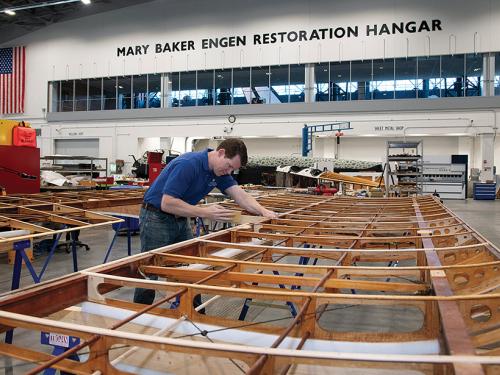1 Images
Upon entry into the First World War, the U.S. Army Air Service ordered a large quantity of the highly successful Curtiss JN-4D primary trainer. To ensure that their needs would be met, the Air Service also placed an order with the Standard Aircraft Company for their J-1 trainer. Approximately 1,600 J-1s were built before production was curtailed when the Curtiss JN-4D became available in adequate numbers.
After the war, Standard J-1s and Curtiss JN-4Ds became available in great numbers at low prices. Along with several other manufacturers, the Nebraska Aircraft Corporation of Lincoln, Nebraska, acquired a number of surplus Standard J-1s. They powered them with a 150-horsepower Hispano-Suiza engine, and offered them for sale as the Lincoln-Standard H.S. In 1921, they expanded the line to include four other models of the J-1, with varying seating capacity of up to four passengers and pilot. The NASM aircraft is believed to be one of the three-seat models sold during the early 1920s.
Display Status
This object is on display in Mary Baker Engen Restoration Hangar at the Steven F. Udvar-Hazy Center in Chantilly, VA.
Object Details
Date
1917-1922
Country of Origin
United States of America
Type
CRAFT-Aircraft
Manufacturer
Standard Aircraft Co.
Physical Description
Single-engine, two-seat biplane trainer and sport aircraft; 150-horsepower Wright-Martin (licensed-built Hispano-Suiza) engine. White finish overall.
Dimensions
Wingspan: 13.6 m (44 ft 7 in)
Length: 8.1 m (26 ft 7 in)
Height: 3.3 m (10 ft 10 in)
Weight: Empty, 789 kg (1,735 lb)
Gross, 1,328 kg (2,922 lb)
Materials
Airframe: Wood
Covering: Fabric
Inventory Number
A19640620000
Credit Line
Gift of Kerr-McGee Oil Industries, Inc.
Data Source
National Air and Space Museum
Restrictions & Rights
Usage conditions apply
For more information, visit the Smithsonian’s Terms of Use.


